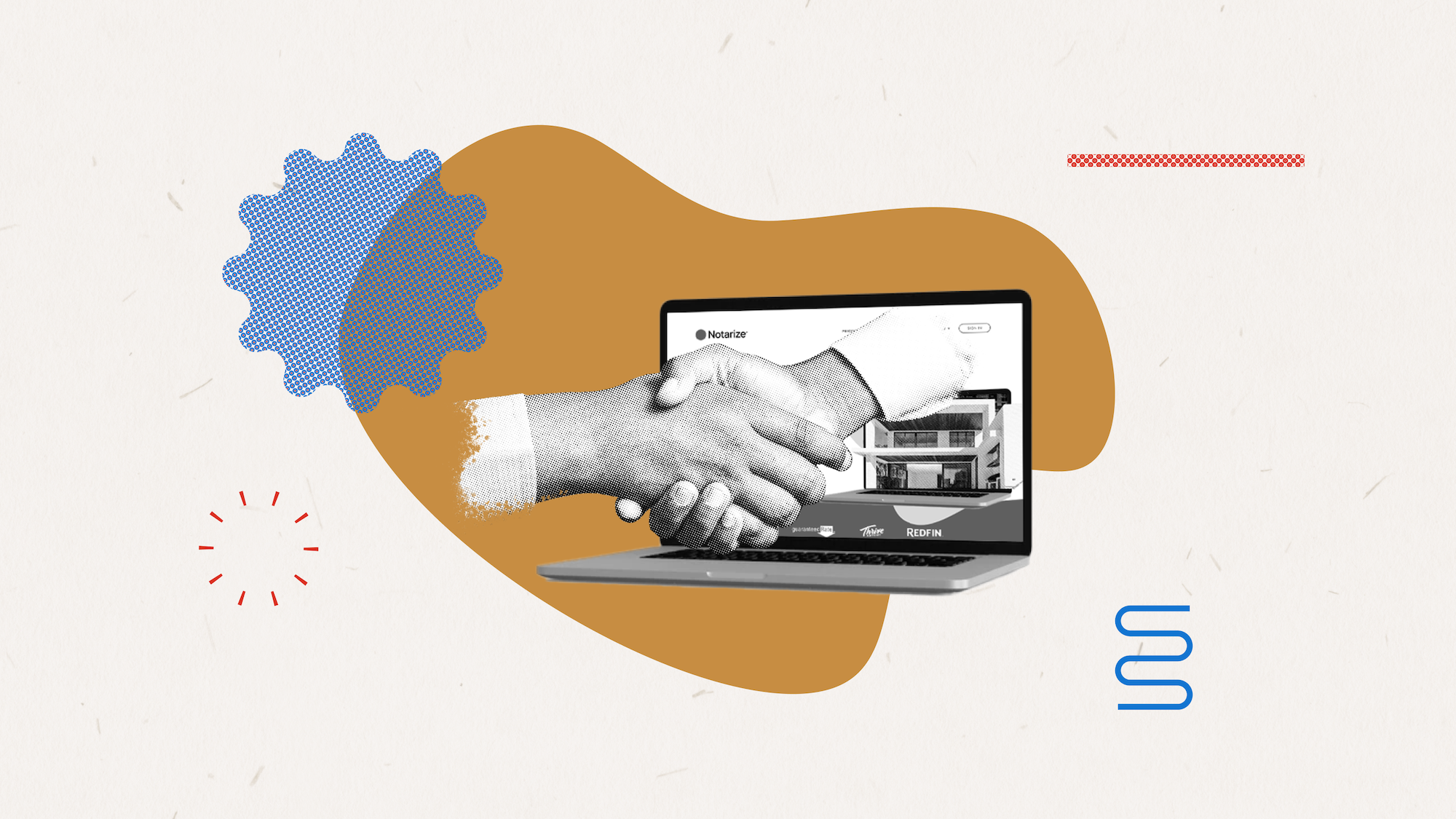
Our team had just launched a free 30-day trial of our paid business “Pro” tier, and we were excited to open up our product and allow people to try our paid features. But once the trial went live, we weren’t getting an increase in quality leads along with it.
Eager to provide our sales team with a steady stream of fresh leads, our product team agreed that signer referrals would be an effective way to get high-quality leads with the product doing all the work for us.
We already had a share feature in place that allowed signers to share their completed documents via email, but it was not an obvious feature to signers. The experience didn’t make it easier or more attractive than just downloading the document and emailing it off themselves.
At a glance, here’s what we wanted our referral flywheel to look like:

When an individual notarizes a document on our app, their journey is not over once they pay and download the document. The document often needs to be sent to someone else, and that someone might be a potential power user for Notarize.
Experience drives success
The product team determined that the Notarize flywheel happens in three steps:
- Individual signers want to share their documents via our platform, because we’ve communicated the benefits and we’ve made it easier than sending it via email, etc.
- The recipients become interested in Notarize when they receive documents because we show them the value and simplicity of the Notarize platform and we answer their initial questions immediately.
- This Referral Flywheel becomes a major source of quality leads for our sales team.
We aimed to improve the flywheel by enhancing two key areas: the signer experience and the recipient experience.
Phase 1: Get signers to share their completed documents using our platform
Our desktop and app experience includes a sharing feature, but there were several issues that caused it to underperform. First, 70% of signers who shared their documents sent them to their personal email, which is what we call “self-shares.” We wanted to decrease this percentage as much as possible. Second, sharing wasn’t presented to the signer as an obvious next step for completing the signing process with Notarize.
With the redesign, we made two important improvements: we made email the obvious next step by exposing the email fields to the user, and, we allowed signers the ability to add multiple emails. Previously, they could only add one recipient.


The redesign increased the overall number of shares by 34% and – most importantly – increased the number of non-self shares by 24%. A jump in the number of shares to a business domain is one of the biggest indicators of a quality lead for Notarize .
This first phase of the project was a huge success. We began to funnel these leads into Salesforce, making it easy for the sales team to quickly follow up with this type of lead.

Phase 2: Improve the recipient experience to show the value and simplicity of Notarize
Our original recipient experience – which included an email that linked to a landing page where the recipient could access the document – didn’t clearly answer the questions a prospective customer would likely want answered.
With this in mind, the redesign set out to answer the following clearly and succinctly:
- Who is sending these documents and why are they being sent through Notarize?
- Can I trust this email?
- What does Notarize do?
We wanted to increase engagement among recipients by increasing the number of recipients who retrieve their documents, request a demo, contact our Sales team, or sign up for an account. Results on these metrics are still to be measured as we gather more data.


Next steps
As we start to sign on more customers, we want to ensure that activation is as quick and frictionless as possible. Our current onboarding process relies largely on our sales and support teams to educate new customers. Our next step will be to stay ahead of this growth by helping cut down on high-touch onboarding and start implementing methods of touchless onboarding within the product.




